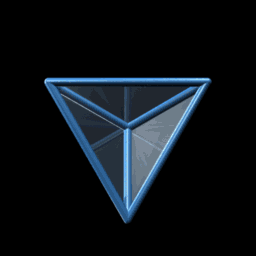|
Size: 5577
Comment:
|
Size: 6718
Comment:
|
| Deletions are marked like this. | Additions are marked like this. |
| Line 12: | Line 12: |
| Enter the four J values into the input boxes. The values k range from kmin to kmax in integer steps. The dimension d of the Hilbert space H4, d = kmax - kmin + 1. we have kmin = max(|j1-j2|,|j3 -j4|)and kmax = min(j1+j2,j3 +j4). The the dimension of the hilbert space is given by d = kmax -kmin + 1. The volume matrix V^2 =M = 2/9(real antisymmetrix matrix). The spins must satisfy (j1+j2)<= (j3+j4)- the triangle inequality. |
In this interact I calculate the angle, area and volume for a quantum tetrahedron The angle is found using the expression: theta = arccos((j3*(j3+1)-(j1*(j1+j1)-j2*(j2+1))/(2*sqrt(j1*(j1+j1)*j2*(j2+1)))) The area is found using the expression: A=sqrt(j1*(j1+1)) The volume is fund using the expression V^2 =M = 2/9(real antisymmetrix matrix) Values of constants gamma is Immirzi parameter gamma =numerical_approx( ln(2)/(pi*sqrt(2))) #G = 6.63*10^-11 hbar= (1.61619926*10^-35)/(2*pi) lp is the planck length lp3=6*10^-104 |
| Line 27: | Line 36: |
| Given the values of J1, J2, J3 and J4 this interact calculates the volume and angle eigenvalues of a quantum tetrahedron. | Given the values of J1, J2, J3 and J4 this interact calculates the volume, area,angle eigenvalues of a quantum tetrahedron. |
| Line 60: | Line 69: |
| print "Angle eigenvalue in radians=",(d8) | d8a=numerical_approx(d8, digits=4) angle = numerical_approx(d8*180/pi, digits=4) print 'angle between faces 1 and 2 in quantum tetrahedron = ',d8a, 'radians' print 'angle between faces 1 and 2 in quantum tetrahedron = ',angle, 'degrees' html('<h3>main sequence Area eigenvalues</h3>') lp=1.61619926*10^-35 main1=numerical_approx(sqrt(j1*(j1+1)),digits=4) areamain1 =0.5*lp^2*main1 print 'Area of face 1=', areamain1, 'm2' main2=numerical_approx(sqrt(j2*(j2+1)),digits=4) areamain2 =0.5*lp^2*main2 print 'Area of face 2=', areamain2, 'm2' main3=numerical_approx(sqrt(j3*(j3+1)),digits=4) areamain3 =0.5*lp^2*main3 print 'Area of face 3=', areamain3, 'm2' main4=numerical_approx(sqrt(j4*(j4+1)),digits=4) areamain4 =0.5*lp^2*main4 print 'Area of face 4=', areamain4, 'm2' area = areamain1 + areamain3 +areamain3+areamain4 print 'Total area of quantum tetrahedron =', area, 'm2' |
Sage Interactions - Loop Quantum Gravity
goto interact main page
Contents

Quantum tetrahedron volume and angle eigenvalues
by David Horgan.
In this interact I calculate the angle, area and volume for a quantum tetrahedron The angle is found using the expression: theta = arccos((j3*(j3+1)-(j1*(j1+j1)-j2*(j2+1))/(2*sqrt(j1*(j1+j1)*j2*(j2+1)))) The area is found using the expression: A=sqrt(j1*(j1+1)) The volume is fund using the expression V^2 =M = 2/9(real antisymmetrix matrix)
Values of constants gamma is Immirzi parameter gamma =numerical_approx( ln(2)/(pi*sqrt(2))) #G = 6.63*10^-11 hbar= (1.61619926*10^-35)/(2*pi) lp is the planck length lp3=6*10^-104 Reference: Bohr-Sommerfeld Quantization of Space by Eugenio Bianchi and Hal M. Haggard. Reference: Shape in an atom of space: exploring quantum geometry phenomenology by Seth A. Major.
Research Blog: http://quantumtetrahedron.wordpress.com
Given the values of J1, J2, J3 and J4 this interact calculates the volume, area,angle eigenvalues of a quantum tetrahedron.
Quantum tetrahedron Area Operator eigenvalues
by David Horgan.
Given the values of J1, J2, J3 and J4 this interact calculates the area eigenvalues of a quantum tetrahedron.
